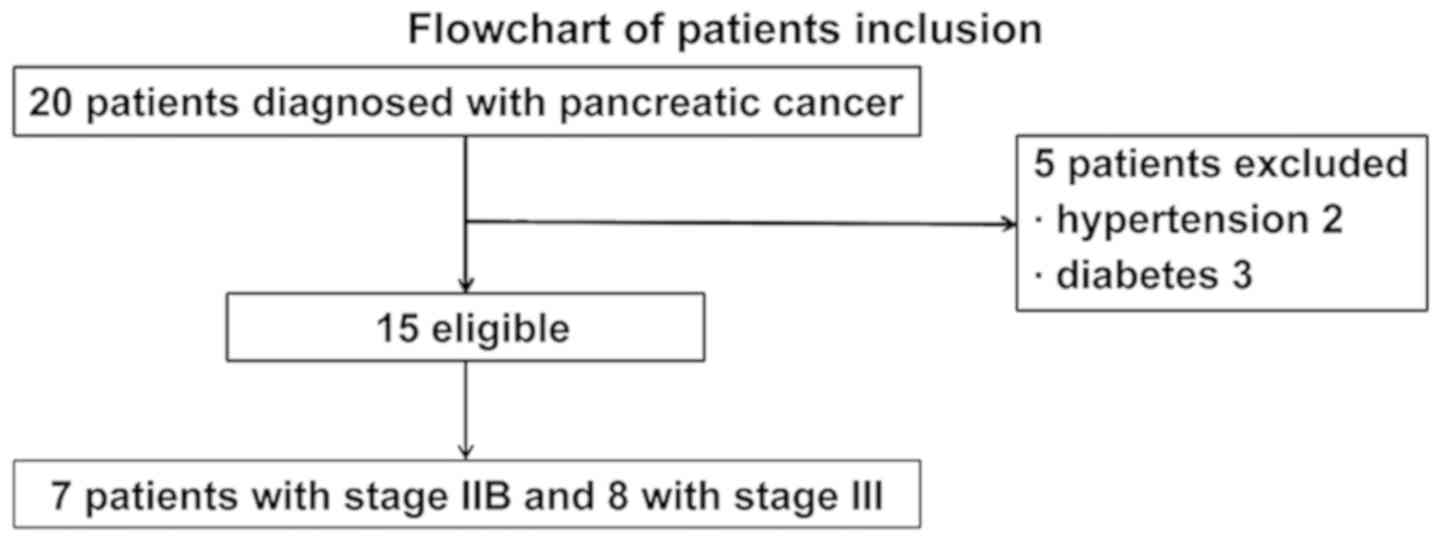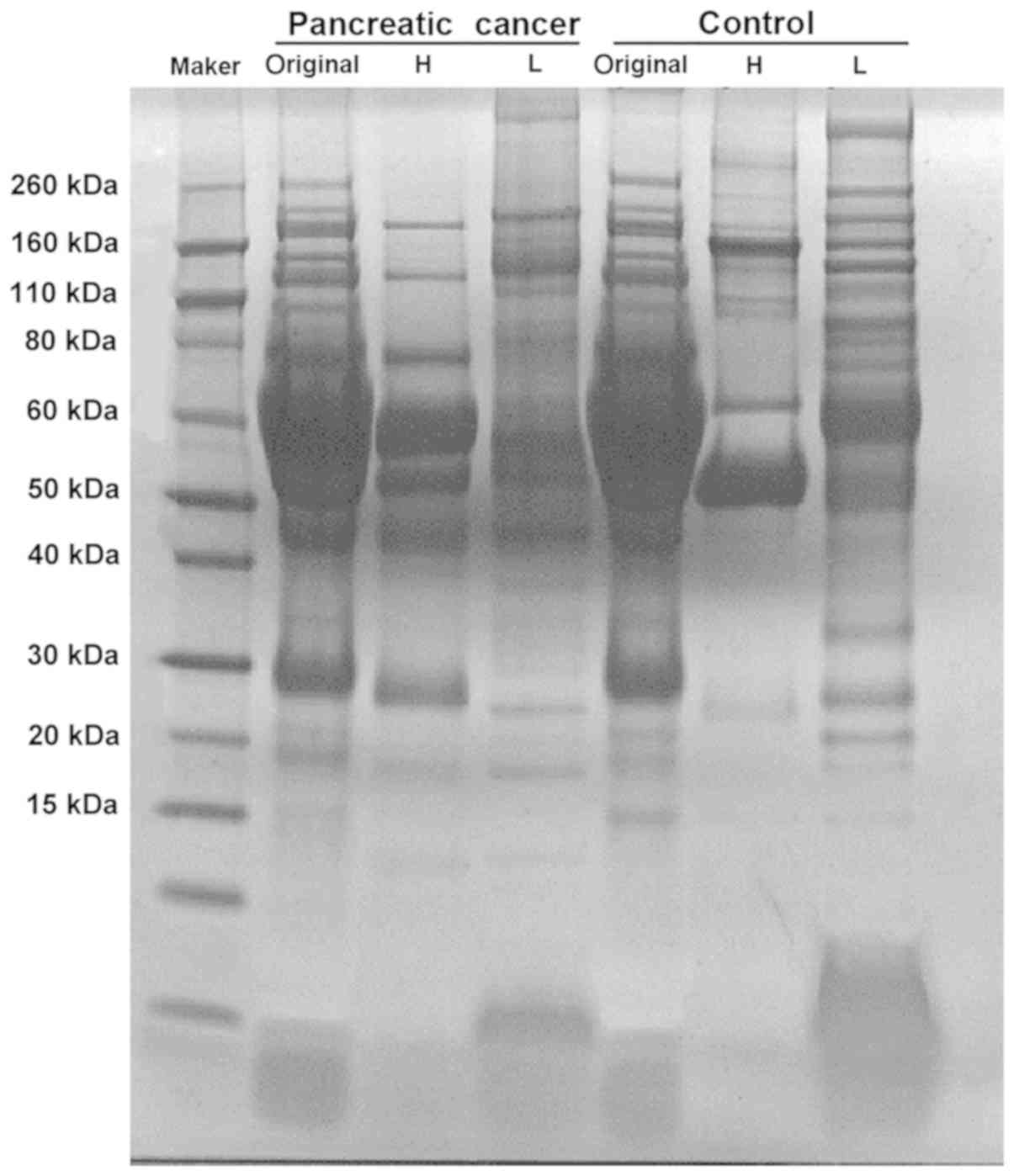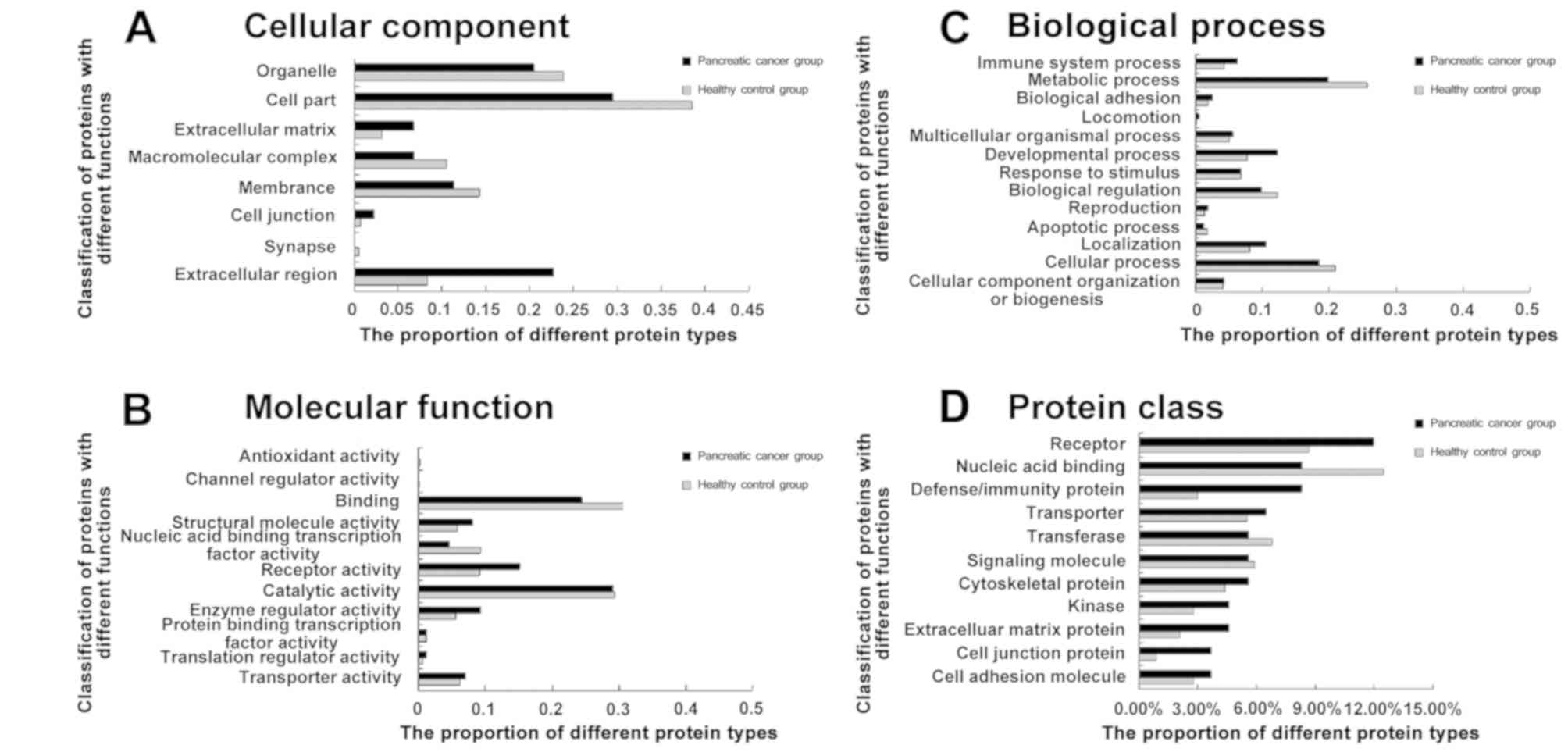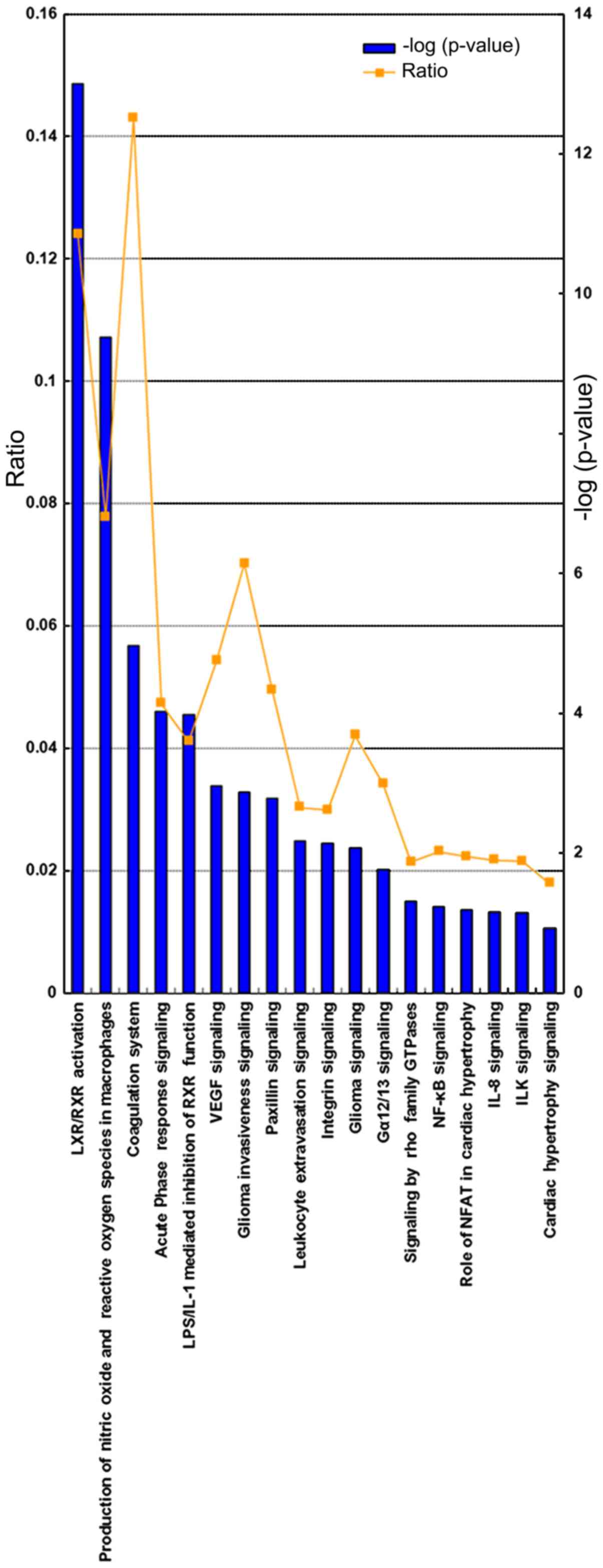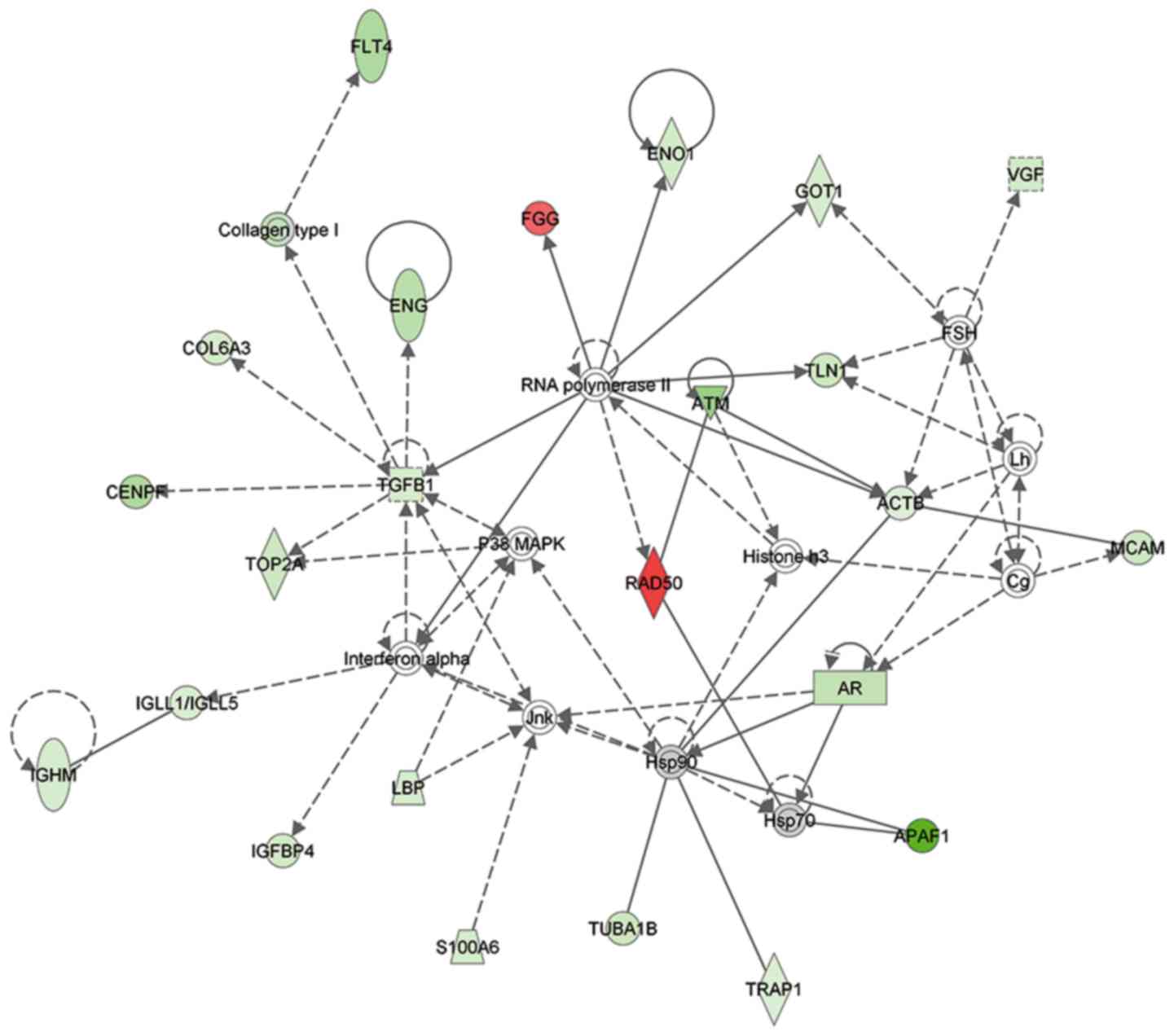|
1
|
American Cancer Society, . Cancer Facts
and Figs 2017. American Cancer Society. (New York, NY). 2017.
|
|
2
|
Rahib L, Smith BD, Aizenberg R, Rosenzweig
AB, Fleshman JM and Matrisian LM: Projecting cancer incidence and
deaths to 2030: The unexpected burden of thyroid, liver, and
pancreas cancers in the United States. Cancer Res. 74:2913–2921.
2014. View Article : Google Scholar : PubMed/NCBI
|
|
3
|
Ross PL, Huang YN, Marchese JN, Williamson
B, Parker K, Hattan S, Khainovski N, Pillai S, Dey S, Daniels S, et
al: Multiplexed protein quantitation in Saccharomyces cerevisiae
using amine-reactive isobaric tagging reagents. Mol Cell
Proteomics. 3:1154–1169. 2004. View Article : Google Scholar : PubMed/NCBI
|
|
4
|
Blaney JM, Crawford G, Elder TR, Johnston
G and Gavin AT: Hospital cancer deaths: Late diagnosis and missed
opportunity. BMJ Support Palliat Care. 1:135–139. 2011. View Article : Google Scholar : PubMed/NCBI
|
|
5
|
Goh SK, Gold G, Christophi C and
Muralidharan V: Serum carbohydrate antigen 19-9 in pancreatic
adenocarcinoma: A mini review for surgeons. ANZ J Surg. 87:987–992.
2017. View Article : Google Scholar : PubMed/NCBI
|
|
6
|
Su SB, Qin SY, Chen W, Luo W and Jiang HX:
Carbohydrate antigen 19-9 for differential diagnosis of pancreatic
carcinoma and chronic pancreatitis. World J Gastroenterol.
21:4323–4333. 2015. View Article : Google Scholar : PubMed/NCBI
|
|
7
|
Chen J, Ge L, Liu A, Yuan Y, Ye J, Zhong
J, Liu L and Chen X: Identification of pathways related to FAF1/H.
Pylori-associated gastric carcinogenesis through an integrated
approach based on iTRAQ quantification and literature review. J
Proteomics. 131:163–176. 2016. View Article : Google Scholar : PubMed/NCBI
|
|
8
|
Wang X, Li Y, Xu G, Liu M, Xue L, Liu L,
Hu S, Zhang Y, Nie Y, Liang S, et al: Mechanism study of peptide
GMBP1 and its receptor GRP78 in modulating gastric cancer MDR by
iTRAQ-based proteomic analysis. BMC Cancer. 15:3582015. View Article : Google Scholar : PubMed/NCBI
|
|
9
|
Martin-Bernabe A, Cortes R, Lehmann SG,
Seve M, Cascante M and Bourgoin-Voillard S: Quantitative proteomic
approach to understand metabolic adaptation in non-small cell lung
cancer. J Proteome Res. 13:4695–4704. 2014. View Article : Google Scholar : PubMed/NCBI
|
|
10
|
Pan S, Brentnall TA and Chen R: Proteomics
analysis of bodily fluids in pancreatic cancer. Proteomics.
15:2705–2715. 2015. View Article : Google Scholar : PubMed/NCBI
|
|
11
|
Pancreatic Surgery Group, : Guidelines for
Diagnosis and Treatment of Pancreatic Cancer (2014 Edition). Chin J
Prac Surg. 34:1011–1017. 2014.
|
|
12
|
Amin MB, Edge S, Greene F, Brookland RK,
Washington MK, Gershenwald JE, Compton CC, Hess KR, Sullivan DC,
Jessup JM, Brierley JD, Gaspar LE, Schilsky RL, Balch CM,
Winchester DP, Asare EA, Madera M, Gress DM and Meyer LR: AJCC
Cancer Staging Manual (8th). Springer. New York, NY: 2016.
|
|
13
|
Kondo N, Murakami Y, Uemura K, Hayashidani
Y, Sudo T, Hashimoto Y, Nakashima A, Sakabe R, Shigemoto N, Kato Y,
et al: Prognostic impact of perioperative serum CA19-9 levels
inpatients with resectable pancreatic cancer. Ann Surg Oncol.
17:2321–2329. 2010. View Article : Google Scholar : PubMed/NCBI
|
|
14
|
Luo G, Liu C, Guo M, Long J, Liu Z, Xiao
Z, Jin K, Cheng H, Lu Y, Ni Q and Yu X: CA19-9-Low&Lewis (+)
pancreatic cancer: A unique subtype. Cancer Lett. 385:46–50. 2017.
View Article : Google Scholar : PubMed/NCBI
|
|
15
|
Poruk KE, Gay DZ, Brown K, Mulvihill JD,
Boucher KM, Scaife CL, Firpo MA and Mulvihill SJ: The clinical
utility of CA19-9 in pancreatic adenocarcinoma: Diagnostic and
prognostic updates. Curr Mol Med. 13:340–351. 2013. View Article : Google Scholar : PubMed/NCBI
|
|
16
|
Wu CC and Bratton SB: Regulation of the
intrinsic apoptosis pathway by reactive oxygen species. Antioxid
Redox Signal. 19:546–558. 2013. View Article : Google Scholar : PubMed/NCBI
|
|
17
|
Liu N, Sun YY, Zhang XW, Chen S, Wang Y,
Zhang ZX, Song SW, Qiu GB and Fu WN: Oncogenic miR-23a in
Pancreatic Ductal Adenocarcinogenesis Via Inhibiting APAF1. Dig Dis
Sci. 60:2000–2008. 2015. View Article : Google Scholar : PubMed/NCBI
|
|
18
|
Umetani N and Hoon DS: Frequent LOH at
chromosome 12q22-23 and Apaf-1 inactivation in glioblastoma. Brain
Pathol. 14:2242004. View Article : Google Scholar : PubMed/NCBI
|
|
19
|
Fu WN, Bertoni F, Kelsey SM, McElwaine SM,
Cotter FE, Newland AC and Jia L: Role of DNA methylation in the
suppression of Apaf-1 protein in human leukaemia. Oncogene.
22:451–455. 2003. View Article : Google Scholar : PubMed/NCBI
|
|
20
|
Uziel T, Lerenthal Y, Moyal L, Andegeko Y,
Mittelman L and Shiloh Y: Requirement of the MRN complex for ATM
activation by DNA damage. EMBO J. 22:5612–5621. 2003. View Article : Google Scholar : PubMed/NCBI
|
|
21
|
Wang X, Szabo C, Qian C, Amadio PG,
Thibodeau SN, Cerhan JR, Petersen GM, Liu W and Couch FJ:
Mutational analysis of thirty-two double-strand DNA break repair
genes in breast and pancreatic cancers. Cancer Res. 68:971–975.
2008. View Article : Google Scholar : PubMed/NCBI
|
|
22
|
Dzikiewicz-Krawczyk A: The importance of
making ends meet: Mutations in genes and altered expression of
proteins of the MRN complex and cancer. Mutat Res. 659:262–273.
2008. View Article : Google Scholar : PubMed/NCBI
|
|
23
|
Tian M and Schiemann WP: The TGF-beta
paradox in human cancer: An update. Future Oncol. 5:259–271. 2009.
View Article : Google Scholar : PubMed/NCBI
|
|
24
|
Bernabeu C, Lopez-Novoa JM and Quintanilla
M: The emerging role of TGF-beta superfamily coreceptors in cancer.
Biochim Biophys Acta. 1792:954–973. 2009. View Article : Google Scholar : PubMed/NCBI
|
|
25
|
Biankin AV, Waddell N, Kassahn KS, Gingras
MC, Muthuswamy LB, Johns AL, Miller DK, Wilson PJ, Patch AM, Wu J,
et al: Pancreatic cancer genomes reveal aberrations in axon
guidance pathway genes. Nature. 491:399–405. 2012. View Article : Google Scholar : PubMed/NCBI
|
|
26
|
Wakefield LM and Hill CS: Beyond TGFbeta:
Roles of other TGFbeta superfamily members in cancer. Nat Rev
Cancer. 13:328–341. 2013. View
Article : Google Scholar : PubMed/NCBI
|
|
27
|
Niu F, Li Y, Lai FF, Ni L, Ji M, Jin J,
Yang HZ, Wang C, Zhang DM and Chen XG: LB-1 exerts antitumor
activity in pancreatic cancer by inhibiting HIF-1α and Stat3
Signaling. J Cell Physiol. 230:2212–2223. 2015. View Article : Google Scholar : PubMed/NCBI
|















